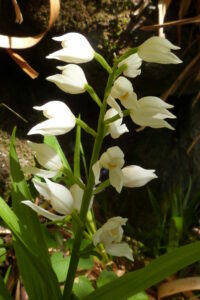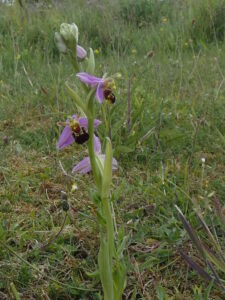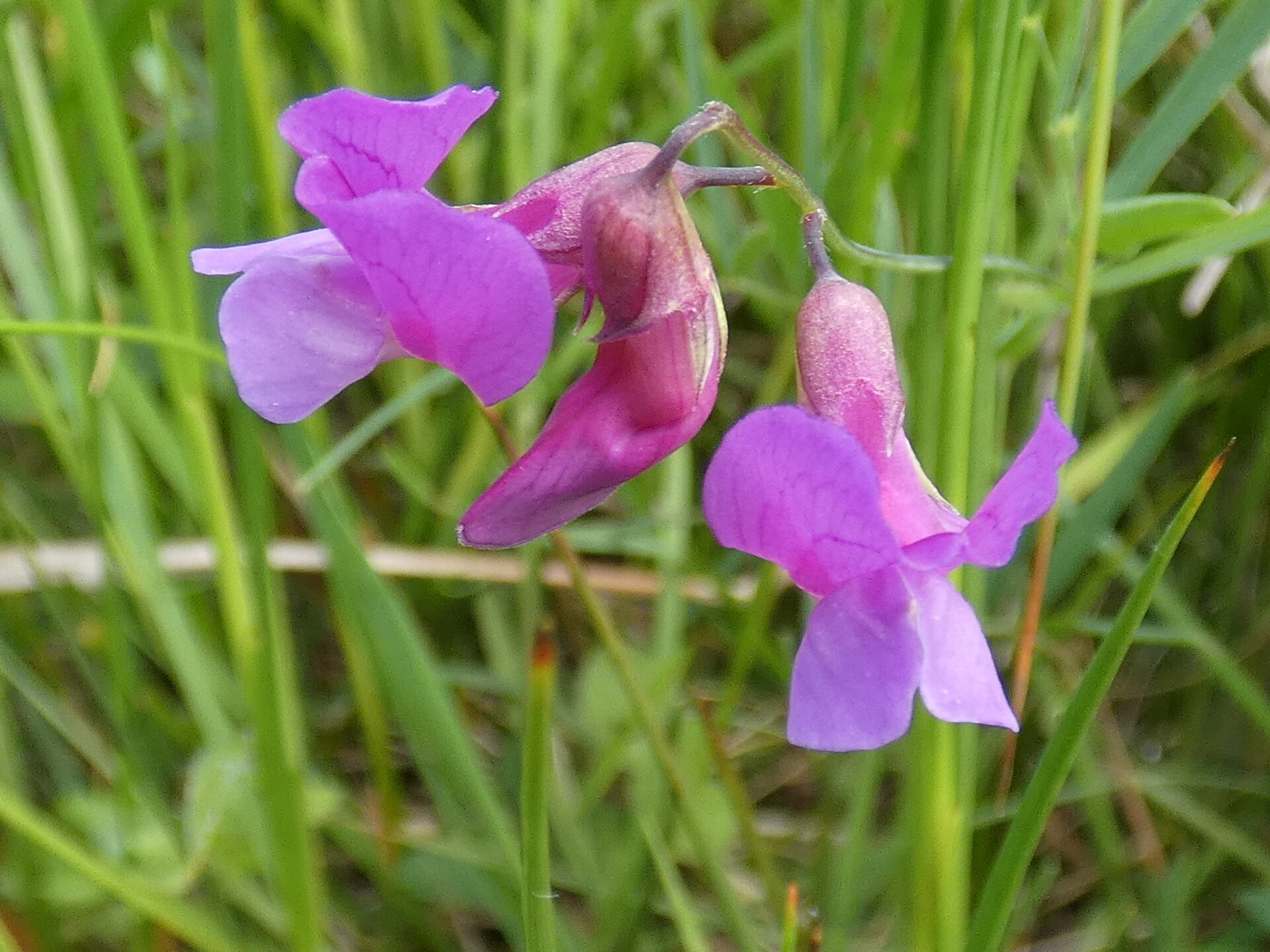The vice-county of Kintyre is one of Scotland’s hidden gems, consisting of the peninsula of Kintyre and the area of Knapdale to the north, along with the isles of Gigha and Cara lying off the west coast. It supports a wide range of habitats, including hills with a number of arctic-alpine species, very interesting limestone areas, extensive oak woodland, and diverse coastal habitats. It is therefore not surprising that around 1,500 species have been recorded in Kintyre to date. Being predominantly a peninsula, you can enjoy coastal, woodland, wetland and moorland plants in close proximity.
Specialities including one of Scotland’s largest Ophrys apifera (Bee Orchid) colonies, and other orchid species such as Dactylorhiza traunsteinerioides (Narrow-leaved Marsh-orchid), Spiranthes romanzoffiana (Irish Lady’s-tresses) and Cephalanthera longifolia (Narrow-leaved Helleborine). The coastal cliffs and caves support some of Scotland’s rarest ferns, and the sub-tidal and inter-tidal zones support Zostera marina (Eelgrass) and Z. noltei (Dwarf Eelgrass). Knapdale’s temperate rainforests hold very good fern and vascular plant populations, with the delightful Hymenophyllum tunbrigense (Tunbridge’s Filmy-fern) a highlight.
Kintyre’s fens and meadows support Scotland’s only mainland sites for Cirsium dissectum (Meadow Thistle), and the only Scottish site for Lathyrus palustris (Marsh Pea). Perhaps the jewel in Kintyre’s crown, Oxytropis campestris (Yellow Oxytropis), is found on sea-cliffs at one of just three sites for this species in Britain and Ireland.



County Recorders
Dave and Pat are looking to retire after an amazing 25 years in the role, studying and recording Kintyre’s remarkable flora. If you are interested in this incredible opportunity, please email Matt Harding (BSBI Scotland Officer)!
County report for 2023Narrow-leaved Helleborine study
Read the results of Pat's long-term study of Cephalanthera longifolia (Narrow-leaved Helleborine) populations in Knapdale!
